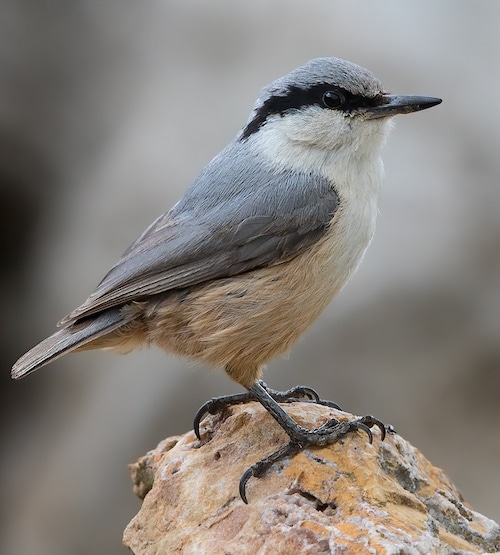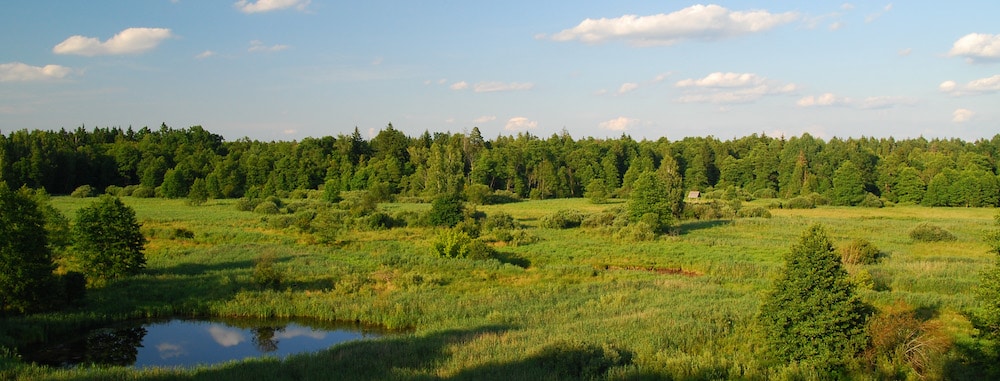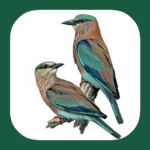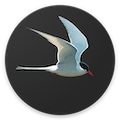Europe

Europe is a continent located entirely in the Northern Hemisphere and mostly in the Eastern Hemisphere. It is bordered by the Arctic Ocean to the north, the Atlantic Ocean to the west, the Mediterranean Sea to the south, and Asia to the east. Europe is commonly considered to be separated from Asia by the watershed of the Ural Mountains, the Ural River, the Caspian Sea, the Greater Caucasus, the Black Sea, and the waterway of the Bosporus Strait. Europe makes up the western fifth of the Eurasian landmass. It has a higher ratio of coast to landmass than any other continent or subcontinent. It covers about o er 10 million km2 (c.4 million square miles), or just 2% of Earth’s surface (6.8% of land area), making it the second-smallest continent (using the seven-continent model). Politically, Europe is divided into about fifty sovereign states, of which Russia is the largest and most populous, spanning 39% of the continent and comprising 15% of its population. Europe has a total population of about 745 million (about 10% of the world population) the third-largest after Asia and Africa.
Land relief in Europe shows great variation within relatively small areas. The southern regions are more mountainous, while moving north the terrain descends from the high Alps, Pyrenees and Carpathians, through hilly uplands, into broad, low northern plains, which are vast in the east. This extended lowland is known as the Great European Plain and at its heart lies the North German Plain. An arc of uplands also exists along the north-western seaboard, which begins in the western parts of the islands of Britain and Ireland, and then continues along the mountainous, fjord-cut spine of Norway. Sub-regions such as the Iberian Peninsula and the Italian Peninsula contain their own complex features, as does mainland Central Europe itself, where the relief contains many plateaus, river valleys and basins that complicate the general trend. Sub-regions like Iceland, Britain and Ireland are special cases. The former is a land unto itself in the northern ocean that is counted as part of Europe, while the latter are upland areas that were once joined to the mainland until rising sea levels cut them off.
Europe lies mainly in the temperate climate zone of the northern hemisphere, where the prevailing wind direction is from the west. The climate is milder in comparison to other areas of the same latitude around the globe due to the influence of the Gulf Stream, an ocean current which carries warm water from the Gulf of Mexico across the Atlantic Ocean to Europe. The Gulf Stream not only carries warm water to Europe’s coast but also warms up the prevailing westerly winds that blow across the continent from the Atlantic Ocean. In general, Europe is not just colder towards the north compared to the south, but it also gets colder from the west towards the east. The climate is more oceanic in the west and less so in the east.
Having lived side by side with agricultural peoples for millennia, Europe’s animals and plants have been profoundly affected by the presence and activities of humans. With the exception of Fennoscandia and northern Russia, few areas of untouched wilderness are currently found in Europe, except for various national parks. Today wolves (carnivores) and bears (omnivores) are endangered. Once they were found in most parts of Europe. However, deforestation and hunting caused these animals to withdraw further and further. By the Middle Ages the bears’ habitats were limited to more or less inaccessible mountains with sufficient forest cover. Today, the brown bear lives primarily in the Balkan peninsula, Scandinavia and Russia; a small number also persist in other countries across Europe (Austria, Pyrenees etc.), but in these areas brown bear populations are fragmented and marginalised because of the destruction of their habitat. In addition, polar bears may be found on Svalbard, a Norwegian archipelago far north of Scandinavia. The wolf, the second-largest predator in Europe after the brown bear, can be found primarily in Central and Eastern Europe and in the Balkans, with a handful of packs in pockets of Western Europe (Scandinavia, Spain, etc.).

Białowieski National Park ©Lilly M, CC BY-SA 3.0 via Wikimedia Commons
Once roaming the great temperate forests of Eurasia, European bison now live in nature preserves in Białowieża Forest, on the border between Poland and Belarus. Other carnivores include the European wildcat, red fox and arctic fox, the golden jackal, different species of martens, the European hedgehog. Important European herbivores include rodents, deer, wild boar and living in the mountains, marmots and chamois among others.
Birding Europe
Bird life across Europe shows divided east to west as well as south to north. Migration and bird movement characterises the seasons. During the summer much of Europe has an influx of birds that spend the winters in the tropics, mostly in Africa, although a few species migrate even further. During winter birds move south and west away from the coldest regions, replacing birds of the same species. For example, the Robins seen in an English garden in winter may well breed in Scandinavia, whereas the ones that nest in England may well spend the winter in southern France or Spain. Birds such as a number of geese and waders breed in the far north in Iceland, Greenland and Scandinavia and over winter in more temperate parts of the continent. As global warming increases more and more migrants are taking the chance to stay where they breed. For example, Blackcaps, Chiffchaffs and even Whitethroats have small populations in the UK all year round.
Bird populations have been in general decline, mostly as the result of human activity. As agriculture becomes more intense suitable food, habitat and nest sites diminish. Parts of Europe allow the shooting of birds and climate change effects populations too.
To cover all European species it is necessary to visit various places. For southern specialities the Iberian Peninsula is a must. Eastern birds which include many races and some Asian birds mean a visit to Romania’s Danube Delta is recommended as is Bulgaria.

Boreal species in the east are best Found in Hungary & Poland, Sweden has many northern specialities. Western Boreal species are best found in Northwest England or Scotland. Many seabirds nest on cliffs and islets of the British coast. For raptor passage nowhere competes with Gibraltar. Certain areas have high concentrations of birds such as the Camargue in France, Doñana in Spain, the Danube Delta and the less exploited woods and farmlands of Poland and Hungary.
Infrastructure in almost uniformly good and most countries have many national parks and nature reserves although a few have poor protection. English is taught as the second language across most of the continent making it relatively easy for visitors from North America and other parts of the English-speaking world… although everyone appreciates it if you try to adapt to local language, customs and so forth.

-
Birding Places
WebsiteBirdingplaces.eu is made by and for birdwatchers. Please help us to fill the map of Europe and share your favourite birding spots with us.
-
*Collins Bird Guide
| By Lars Svensson, Killian Mullarney & Dan Zetterström | HarperCollins | 2023 | Edition 3 | Paperback | 478 pages, 4000+ colour illustrations, 700 colour distribution maps | ISBN: 9780008547462 Buy this book from NHBS.com -
A Naturalist's Guide to the Birds of Britain & Northern Europe
| By Peter Goodfellow | John Beaufoy Books | 2019 | Edition 2 | Paperback | 160 pages, 300 colour photos | ISBN: 9781912081219 Buy this book from NHBS.com -
Birding in Eastern Europe
| By Gerard Gorman | Wildsounds | 2006 | Paperback | 288 pages, illustrations | ISBN: 9781898665076 Buy this book from NHBS.com -
Birds in Europe
| (Population Estimates, Trends and Conservation Status) | By BirdLife International, Ian J Burfield & Frans van Bommel | BirdLife International | 2004 | Paperback | 374 pages, b/w illustrations, colour maps, tables | ISBN: 9780946888528 Buy this book from NHBS.com -
Birds of Europe, North Africa and the Middle East
| (An Annotated Checklist) | By Dominic Mitchell | Lynx Edicions | 2017 | Hardback | 335 pages, 1 b/w illustration, 1 b/w map | ISBN: 9788494189296 Buy this book from NHBS.com -
Birds of Europe, North Africa, and the Middle East
| (A Photographic Guide) | By Frédéric Jiguet &Aurélien Audevard | Princeton University Press | 2017 | Paperback | 47 pages, 2200 colour photos, colour distribution maps | ISBN: 9780691172439 Buy this book from NHBS.com -
Europe's Birds - An Identification Guide
| By Andy Swash, Rob Hume, Hugh Harrop & Robert Still | WILDGuides | 2021 | Flexibound | 640 Pages, 540 maps, 4700 colour photois | ISBN: 9780691177656 Buy this book from NHBS.com -
The Crossley ID Guide: Britain & Ireland
| By Richard Crossley & Dominic Couzens | Princeton University Press | 2013 | Paperback | 304 Pages | 310 Plates with Colour Photos | 250 Colour Distribution Maps | ISBN: 9780691151946 Buy this book from NHBS.com

BIRD SONGS of Europe, North Africa and the Middle East
Apple iOS | Android| Mullen & Pohland GbR | Sunbird Apps | This is the professional app to the renowned reference work of Schulze and Dingler covering all 800 European species including 2817 songs and calls known from the 17# CD set! This is the best set of songs and calls for this region ever published.
Birds of Northern Europe
Apple iOS | Android| NatureGuides Ltd | 757.2 MB | Requires iOS 9.3 or later | A high-quality digital field guide, with bird names in 15 languages, covering 352 species of birds regularly seen in Northern Europe. This list covers all except rarer vagrants and includes every bird likely to be seen by the vast majority of birdwatchers in the region throughout the year. Countries covered include Britain, Ireland, Iceland, Norway, Sweden, Finland, Denmark, Holland (The Netherlands), Belgium, Germany, Poland, Latvia, Lithuania, Estonia, Luxembourg and Northern France. Comprehensive information is provided including: multiple annotated illustrations by leading artists showing the full range of plumages including rarer races and variations, beautiful still photographs for many species; songs and calls, maps showing distribution in Europe, North Africa and the Middle East and the full detailed text accounts from the Concise edition of Birds of the Western Palearctic (THE standard reference work originally published by Oxford University Press). Perfect for more experienced birders who will appreciate the comprehensive and professional ornithological content in this App.
Birds of Western Palearctic
Apple iOS | Android| mydigitalearth.com | 372 MB | iOS 10.3 or above | Requires Android 3.0 and up | This app is an interactive companion to the book "The Handbook of Bird Identification for Europe and the Western Palearctic" – the comprehensive book for birdwatchers interested in the region. It covers ALL the regions found in the book.
Collins Bird Guide
Apple iOS | Android| (A field guide to Europe) | NatureGuides Ltd | 907.3 MB | iOS 9 Android OS 5 | English, French, German, Norwegian Bokmål, Swedish | Full interactive experience with calls and song as well as text and illustrations from the best fieldguide ever.Useful Information-
Birding Places
WebsiteWe give birders the opportunity to find and share birdingplaces. With all the details you need for some fine hours of birding. The idea behind Birdingplaces.eu is that as a birdwatcher you help your fellow birders from other regions or countries. By sharing birdingplaces from your own region or great places you discovered abroad. In this way we all can enjoy the thousands of birding gems scattered all over Europe. -
European Colour-Ringing
WebsiteEuropean colour-ring Birding is a platform between the field-observer and the project-leader. Therefore it can not provide any details or life-list of your sighting. To get this information, you have to go through this website, find the project-leader and contact her/him.
Organisations-
EURING - European Union for bird ringing
WebsiteBird ringing? An important technique in ornithology or just a bird watchers hobby? The answer is a fruitful combination of them both. Ringing is a vital tool for scientists, particulary for studying the life histories, population dynamics and movements of birds. Much for the data of this work are gathered by well-trained professional amateurs whose motivation is not money, but the simple privilege of working with birds for the purpose of conservation.
Other Links-
Addresses of all European Ringing Stations
WebsiteDirk Raes excellent site on colour ringing which most European birders will already know of. -
Birds On-line
WebsiteMuch information on European birds, over 250 pictures, red lists, etc -
European Bird List
InformationBirds occurring in Europe -
European birds
WebsiteThis site gives you information of more than 900 bird species that occur in Western Palearctic. There are also more than 3000 photos of over 340 different species on the site. You can find information in nine different languages and the bird names in 16 languages -
Ornithomedia
WebsiteOrnithomedia is a web site concerning Birding in Southern Europe: it`s a complete site: news, best spots, bird identification, articles about rarities, Flash animations, etc. An on-line shop sellinmg, for ezample, the new Birding CDROM Sentiers Ornithologiques en France, en Espagne et au Portugal (soon in English). -
Raptor Identification
WebsiteA building resource to give extensive, detailed and updated information about the identification of European raptors.
Blogs-
Gerard Gorman
BLOGAll about Europe's woodpeckers
Fatbirder - linking birders worldwide... Wildlife Travellers see our sister site: WAND
Skip to content

